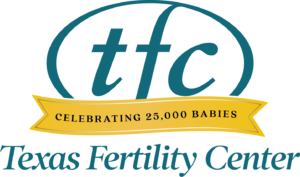
Demystifying what happens in the IVF lab
Are you considering IVF as a way to start or expand your family? If so, you may be wondering what happens in the IVF lab after the egg retrieval process. At Texas Fertility Center San Antonio, we are here to guide you through every step of the process, including the mysteries of “what happens in the IVF lab?”
The IVF lab process
Once the eggs have been retrieved from the ovaries, they are taken to the IVF lab, where skilled embryologists begin carefully examining them to determine their maturity level and prepare them for the fertilization process. After the egg retrieval is complete, a total number of eggs is identified, and that information is shared with the patient.
Around the same time as the egg retrieval, the sperm are collected and prepared for fertilization. Our San Antonio IVF lab technicians use a variety of techniques to optimize sperm quality and select the healthiest sperm for fertilization.
Once the sperm are ready, they are typically introduced to the eggs in a process called conventional insemination. When sperm counts are low or motility is poor, a special technique called intracytoplasmic sperm injection, or ICSI, can be used to optimize chances for successful fertilization.
The following day, the eggs are examined to identify if successful fertilization has occurred. If so, these fertilized eggs are called embryos, and the next phase of what happens in the IVF lab can begin.
What happens in the IVF lab part two: The embryo phase
After successful fertilization, the embryos are closely monitored by skilled embryologists at our San Antonio IVF lab to track their growth and development over several days. This monitoring phase is an important part of what happens in the IVF lab, and the embryology team will provide you with updates about your embryos’ development during this time. If preimplantation genetic testing (PGT) is being done, a small sample of cells will be removed from the perimeter of the embryo for genetic analysis.
Embryos are transferred to the uterus once it is prepared for pregnancy, sometimes several days after egg retrieval, but more commonly, during another cycle in which the woman’s hormones are at a more natural level. Embryos can be cryopreserved at the blastocyst stage, usually four to six days after fertilization occurs, for later transfer. If you opt for genetic testing of your embryos, they will be frozen and safely stored until the results are returned, so that the most genetically healthy embryo can be chosen for transfer.
Embryo transfer
On embryo transfer day, the laboratory will prepare the embryo several hours before the transfer, to allow for optimal readiness of the embryo for implantation. When ready, the selected embryo is gently guided up into a small, flexible catheter only a few millimeters wide. The catheter is then given to your fertility doctor, who will place it into the uterus and perform the transfer under ultrasound guidance. This process is typically painless and only takes a few minutes to complete. About 10 days later, a blood pregnancy test can confirm whether successful implantation has occurred.
At Texas Fertility Center San Antonio, we are committed to providing the highest level of care to help you achieve your dreams of starting or expanding your family. If you have any questions about what happens in the IVF lab or would like to schedule a consultation with one of our experienced fertility specialists, please don’t hesitate to contact us today.


